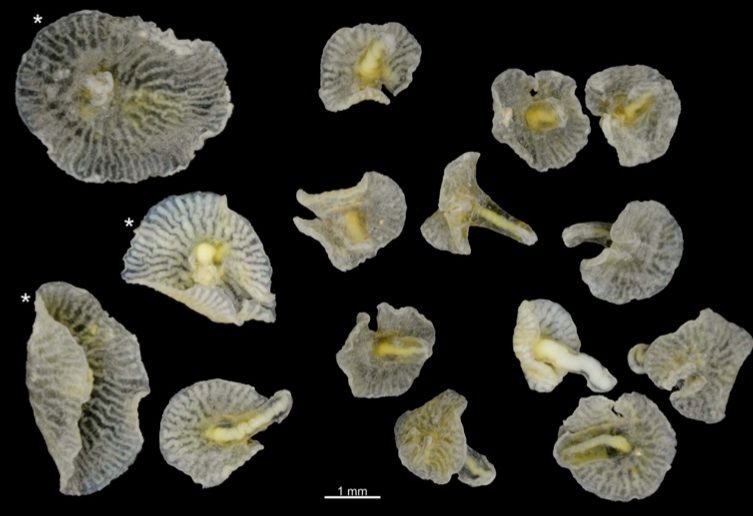Deep-Sea Mushroom Creatures Found Off Australia
Neither fungi nor fish, these oddball organisms collected in 1986 may represent an early branch on the tree of life
/https://tf-cmsv2-smithsonianmag-media.s3.amazonaws.com/filer/fe/7c/fe7c80b6-b0e0-4271-8430-70bed65c316d/shroomi.jpg)
The deep sea harbors a rogues' gallery of outlandish life-forms, from razor-toothed fish that use tiny lights to lure prey, to giant isopods that resemble face-size rolly pollies. Now, mushroom-shaped creatures reminiscent of Super Mario Bros. characters have joined that seemingly alien world.
Collected back in 1986, the creatures represent a whole new genus, dubbed Dendrogramma by its Danish discoverers. They seem to be most closely related to Cnidarians (jellyfish) and Ctenophora (comb jellies), but they don’t have telltale features that would definitely place them in these groups. In addition, Dendrogramma seems to share features with some extinct Precambrian organisms that date back to 600 million years ago, the researchers report today in the journal PLOS ONE.
“Current evidence suggests that they represent an early branch on the tree of life,” Jørgen Olesen, an expert in biosystematics at the University of Copenhagen and co-author of the paper, said in a release.
When the specimens were collected back in the '80s, researchers used a remotely operated device to take samples of marine life from up to 3280 feet below the ocean’s surface, near the southeast Australian continental slope. They found 18 of the mushroom-like organisms on the first pass, and they stuck the approximately 0.4-inch-wide animals into neutral formaldehyde and ethanol to preserve them.

Almost immediately, the scientists knew they had stumbled across something peculiar. The organisms’ “unusual nature” and “uncertain taxonomic affinity” struck the researchers, and they were also puzzled to find that there was no indication the creatures had been pulled or torn from a rock or the ocean floor. In other words, while they looked like mushrooms, they seemed to be free-living animals. But when the team returned to the same sampling site in 1988, they could find no further evidence of the creatures, and for nearly 30 years their identity remained elusive.
Over time, the specimens shriveled and became brittle in the harsh alcohol solution. Still, Olesen and his colleagues were able to use the samples, along with photos and notes taken in 1986, to finally give Dendrogramma their rightful place on the phylogenetic tree. In addition to describing the new genus, the team identified two species among the collection, which they have named D. discoides and—appropriately—D. enigmatica.
Many questions remain, including how Dendrogramma reproduce, what they eat and their precise relationship to other species, including modern jellyfish and more ancient organisms. The researchers even wonder if the mushroom creatures should belong to their own phylum, the fourth tier on the hierarchy of biological classification. However, they write, “we refrain from erecting such a high-level taxon for the time being, because new material is needed to resolve many pertinent outstanding questions.”
Molecular analysis would help unlock some clues, but such efforts were impossible given the damage caused by the preserving solution the specimens were kept in. Answers will have to wait until fresh mushrooms can be plucked from the sea.
/https://tf-cmsv2-smithsonianmag-media.s3.amazonaws.com/accounts/headshot/Rachel-Nuwer-240.jpg)
/https://tf-cmsv2-smithsonianmag-media.s3.amazonaws.com/accounts/headshot/Rachel-Nuwer-240.jpg)